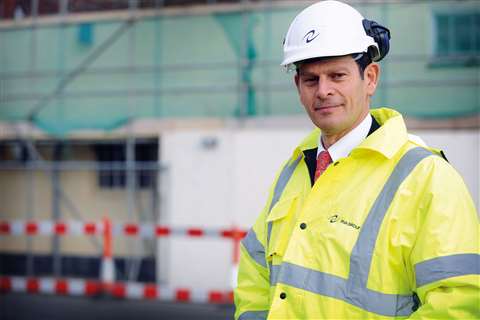8 tips for ‘navigating the unexpected’ in demolition
21 September 2022
Covid-19 gave us all a stark reminder that however effective our planning techniques, you never truly know what’s around the corner.
That doesn’t mean you can’t be prepared for different outcomes, of course, which arguably equips us all with the knowledge and agility to react, even when the unexpected happens.
 Richard Vann, managing director, RVA Group. (Photo: RVA Group)
Richard Vann, managing director, RVA Group. (Photo: RVA Group)
But to claim to have a 100% concrete plan, is unrealistic, and dare I say it, naïve.
Planning in demolition
In the demolition industry specifically, there is rarely only one possible route map – that’s why feasibility and option studies are such important instruments, for example.
From the exploration of different asset divestment options and methodologies, to resource planning and EHS (environment, health and safety) considerations, such tools help scope the work programme and its potential outcomes.
The study is even more value-adding when accompanied by integrated and adjustable spreadsheets that aid both initial costing calculations and ongoing financial provisioning, even as external factors evolve.
Because let’s face it, nothing stands still – particularly when it comes to economics.
Helping clients make better informed decisions
In short, this type of scenario planning – when undertaken by an experienced demolition professional – empowers clients to better make informed decisions. It provides the intel – ideally supported by evidenced recommendations – to help decide what to do next, when, how, and with whose help.
And it arms even the biggest demolition novice, with the confidence to proceed. Knowledge is power after all.
Remaining flexible and navigating the unexpected
But even when a comprehensive schedule of work is assembled, and a proficient project team is appointed – equipped with the skills to execute the methodologies agreed – a plan should always remain flexible. Here’s why:
1: Demolition projects, by their very nature, uncover unanticipated challenges all the time.
And as the saying goes – you don’t know, what you don’t know. So how can you plan for everything? And why would you execute every planning exercise in utmost detail if you aren’t yet clear on exactly what the detail will be?
2: Demolition is different from construction.
If you build a house, for example, a quantity surveyor can work with a significant degree of accuracy to calculate the quantity and type of materials required and how long the project should take, based on the design provided. And even then, some surprise hurdles may arise along the way.
3: When you are taking something apart, and that asset is the size of a power station, which has stood for more than 60 years, it’s a whole different story.
Drawings are often incomplete – if not missing altogether – and the people who operated the plant may be long gone. In these circumstances, educated assumptions must therefore be made until surveys can be concluded and the structure is brought to a known state.
4: Planning must remain dynamic – for every stage that follows.
Because structures and scenarios can continue to change all the time.
So, the planning only stops when the job is complete.
5: Mindset matters almost as much as the quality of the initial plan itself.
You can never take your eye off the ball, as you don’t know what tomorrow will bring. And the ongoing progress and evolution of the plan should not – and cannot – remain the responsibility of a single party.
6: At RVA Group, we’ve long talked about the importance of a tripartite alliance between client, contractor, and someone like us, acting as the independent consultant.
Because, for a start, nobody knows everything. A contractor may be able to prove the capabilities of a new machine that could help complete the project quicker and safer, for instance. Or there may be advanced waste management experience that would strengthen the environmental credentials of a methodology. Whether new ideas are harnessed at the outset, or fresh information is gathered as the project unfolds to help validate the plan or the need to adjust it, each party forms an essential part of the team.
7: Removing any of these three parties’ seats at the decision-making table, increases project risk.
Only relatively recently, a client sought RVA’s assistance to write a job specification, before terminating our involvement when the contractor was appointed.
The client took the programme forward without ongoing impartial project management support, and there were two major incidents on site.
8: There are some operators who choose not to obtain any independent advice whatsoever.
But if you’re making a series of presumptions about a fleet of power stations for example, without undertaking any detailed surveys, how can a contractor accurately quote?
Will the client truly understand the capacity of the supply chain and any likely programme delays?
Do they know if any of the assets will re-sell or if the scrap market is the only likely route for dismantled kit? Has marketplace volatility been factored in? Have isolation strategies been designed with utmost safety of all stakeholders in mind?
The planning considerations, of course, go on and on.
Demolition may feel like a “nuisance” event to a client who is rationalising their operations or clearing a mothballed site to limit their liability. But that doesn’t mean corners can be cut when it comes to planning – as you don’t know what you’ll find around that corner, otherwise.
- Read Richard Vann’s column in the print and digital issues of Demolition & Recycling International



